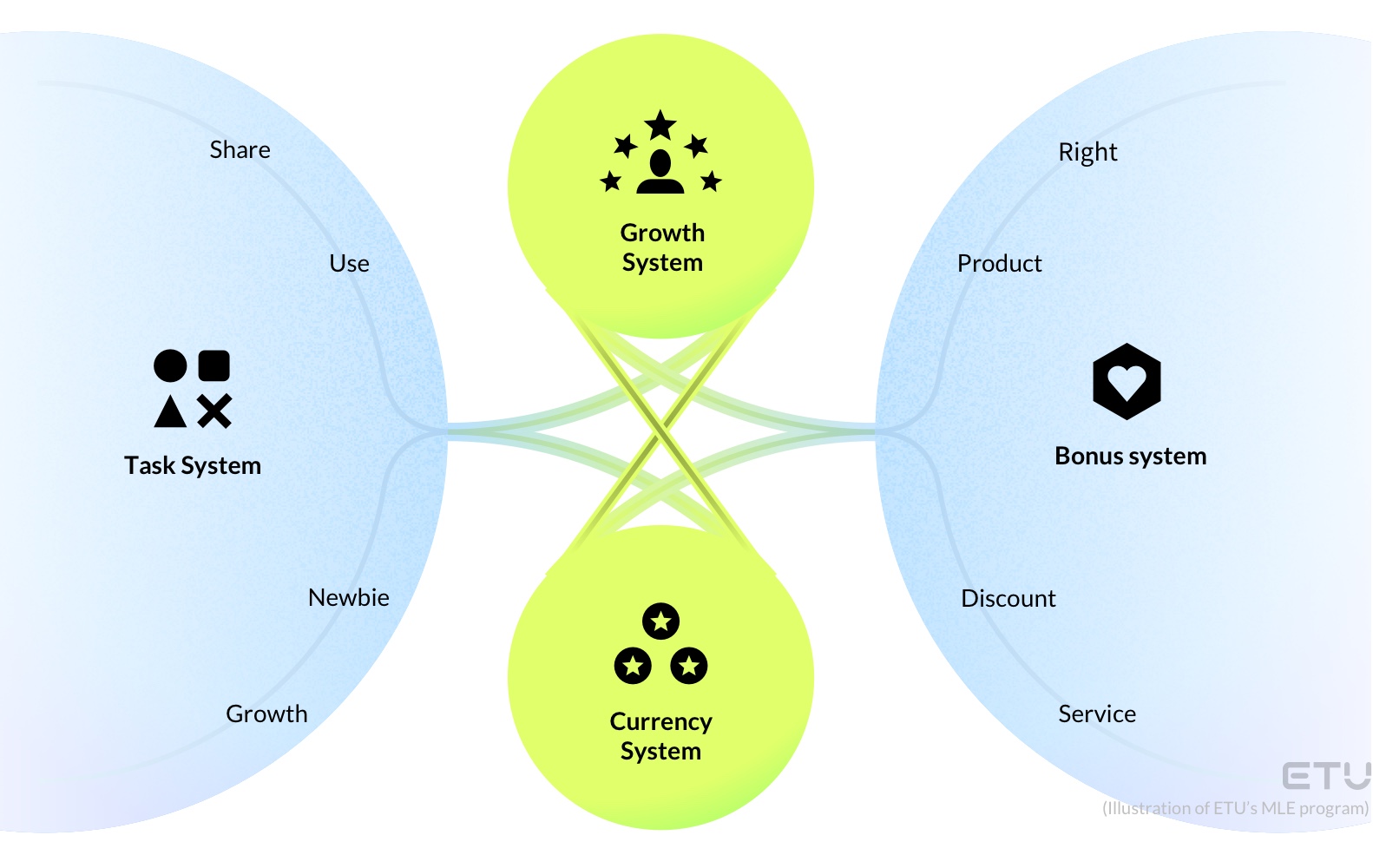“User retention is the key!”
— Insights into three market phenomena.
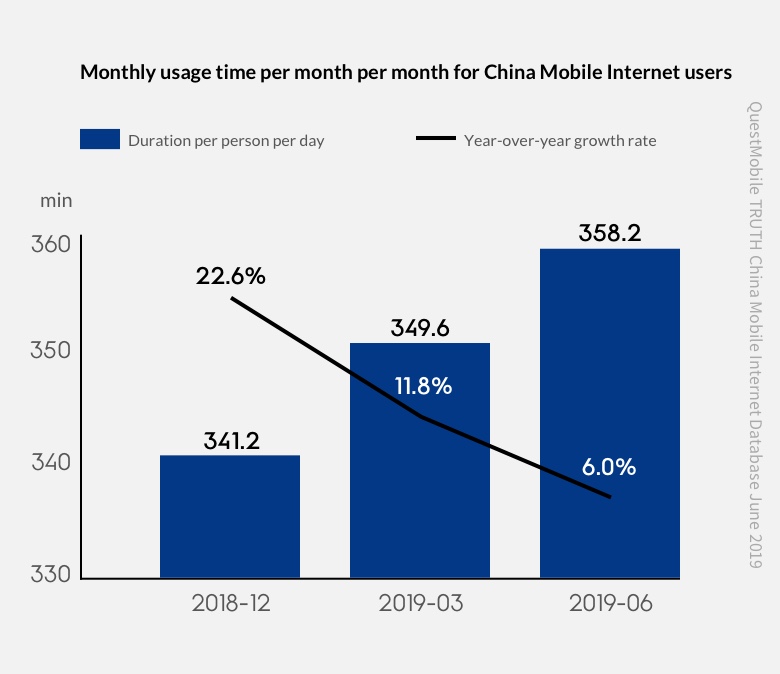
The demographic dividend faded away.
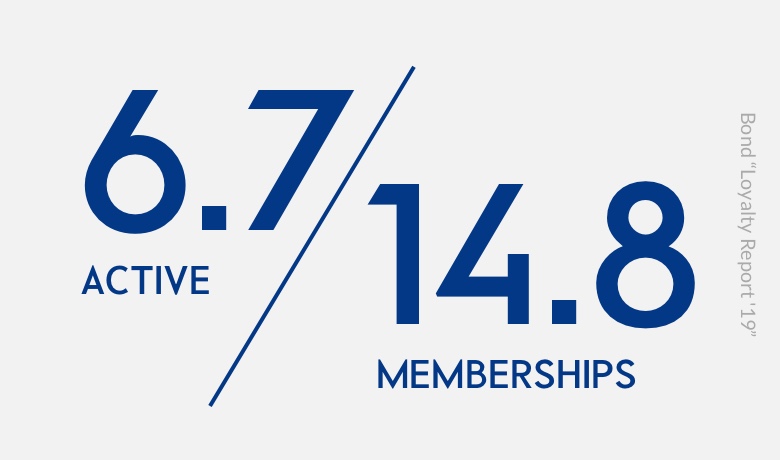

Disconnection exists between user acquisition and retention.
Consumers tend to react to rewards with numbness.
1. 30.5% of inactive users consider the rules of reward application are complicated.
2. 32.3% of users show no interest in the reward in a system.
3. 28.4% of members are not familiar with how to use the bonus in a program.
We understand your business might be facing challenges listed below:
i. Market competition becomes overwhelming;
ii. Sales growth slows down;
iv. Customer buying behavior is motivated by discount, not brand loyalty;
v. The operation of CRM receives low ROI;
vi. Underperforming DAU/MAU proves low user engagement.
ETU’s Membership Loyalty Experience methodology hones UX empowering CRM to regain user engagement.
One significant finding in the Loyalty Report 2019 shows 4 out of 5 driving forces impacting member’s satisfaction and engagement level are related to UX. When user acquisition becomes a stone stopping a business’s sales growth, UX is the Mjolnir (ultimate hammer) required in maintaining CRM.a) Member persona generated from three steps of user research.
We center member’s needs and dive deep into a member’s interaction within a membership program. User research includes emotion study, behavioral study, member lifestyle, and member scenarios, which leads to member persona crafting.Here are three main research areas:
1. User mental model research;
2. User behavior research;
3. Demographic and lifestyle research.
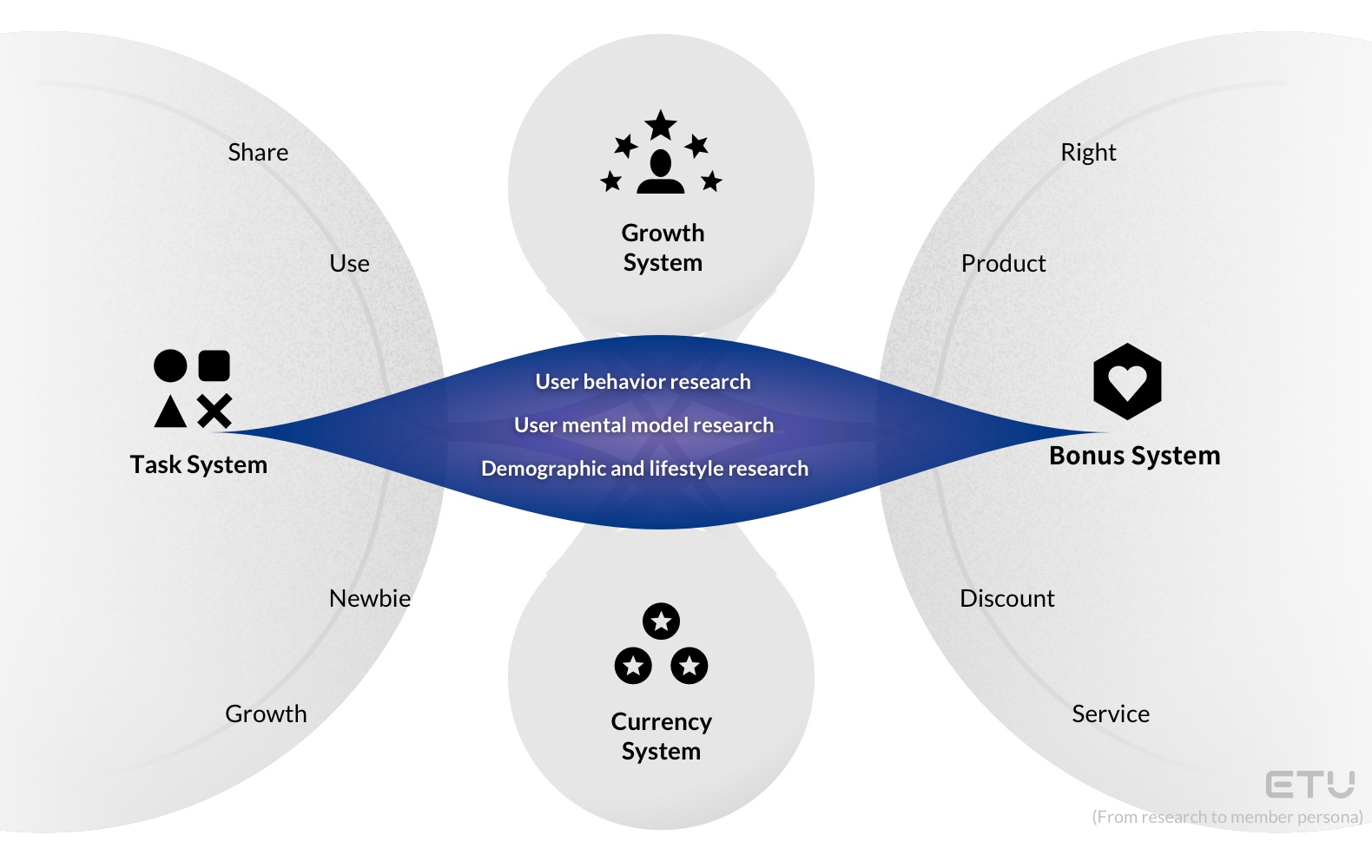
b) Addressing member engagement issues with three driving forces.
To tackle the loyalty issue, we leverage some consumer sensitive factors to lower cognitive difficulty. Meanwhile, we provide a solution to improve the CRM rules to engage members and redesign every action in a membership program to retain their member loyalty along with the sales growth.Here are three driving forces:
1. Price motivation means a member is able to pay less for the same product or service;
2. Success motivation means a member is able to receive recognition as they grow;
3. Emotion motivation means a member is able to feel and react to the hospitality of a business.
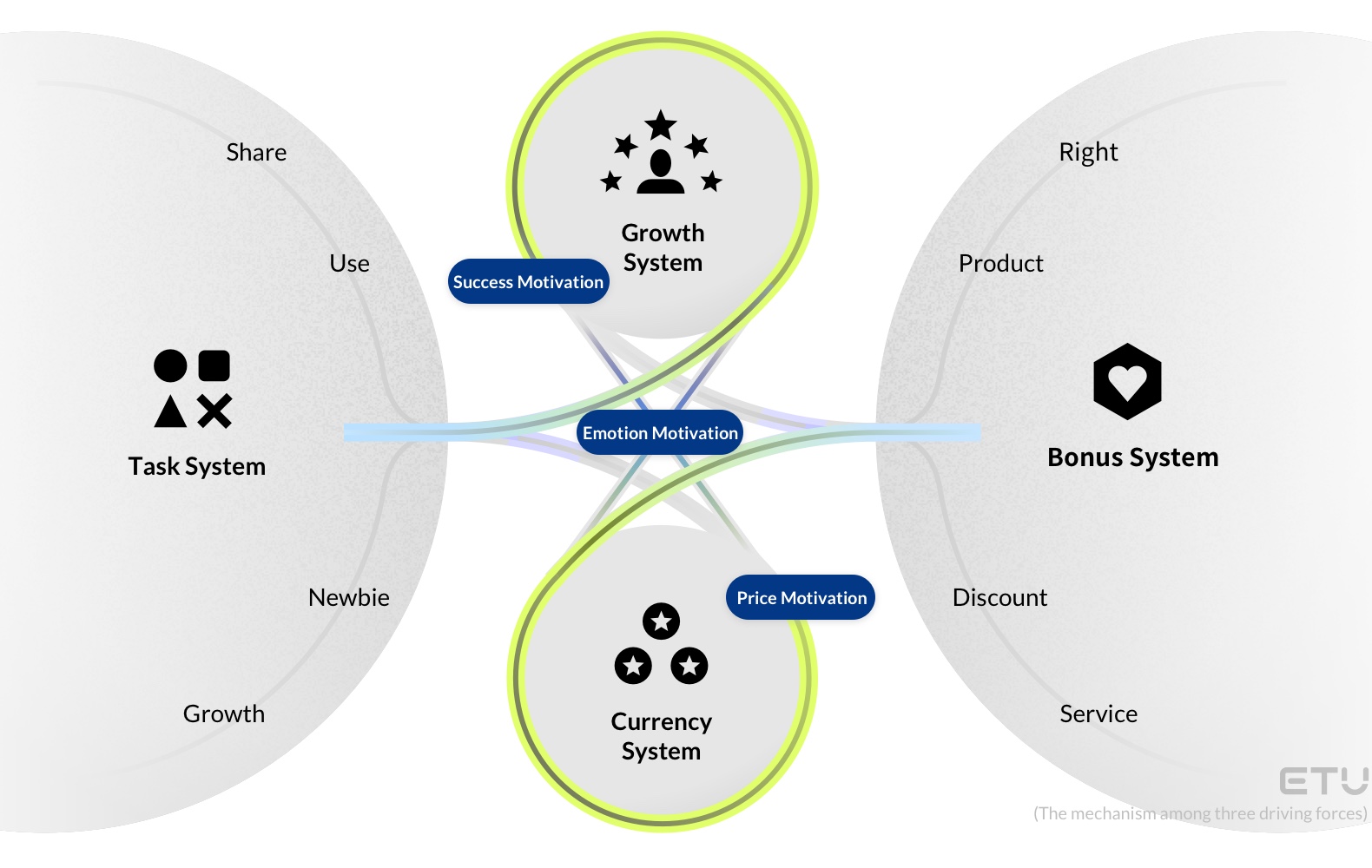
c) Four systematic strategies co-create a membership experience ecosystem with high efficiency and healthy performance.
A membership system is the media and connection between a business’ brand/product/service and its user. To maximize the impact of business service on multiple channels, a valuable membership system should start to plan out four types of sub-system: currency, bonus, task, and growth.Here are the details of four sub-systems:
1. A currency system matching member consuming value;
2. A bonus system matching member core cognition to the product;
3. A growth system matching member mental model;
4. A task system with high ROI.
